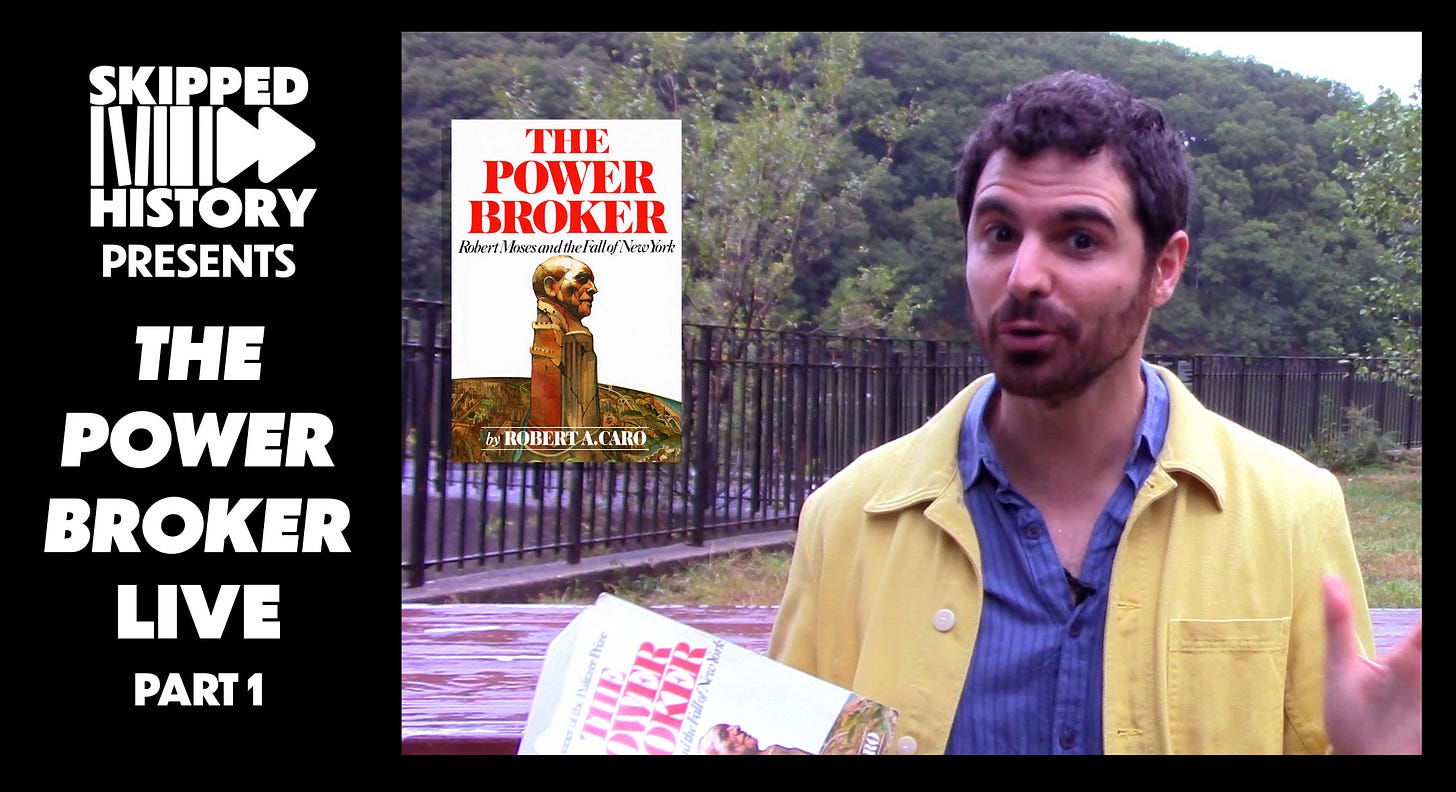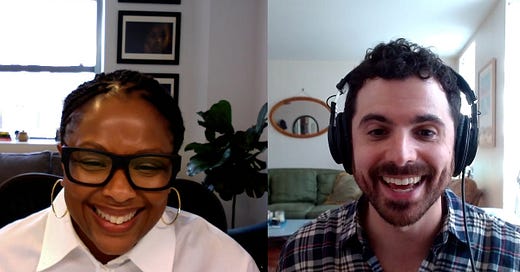I’m so excited to share today’s interview with Professor Deborah N. Archer about transportation history—my favorite subject! Professor Archer details how highways are a visceral emblem of white supremacy. We may often forget their origins, but as she reminds us in her new book, Dividing Lines: How Transportation Infrastructure Reinforces Racial Inequality, “with transportation infrastructure, history is the present.”
Professor Archer is associate dean and professor of law at NYU School of Law, and she’s also president of the ACLU. Her scholarship has appeared in leading law reviews, and she’s offered commentary for numerous outlets, including MSNBC, NPR, CBS, The Atlantic, and The New York Times.
A condensed transcript of our conversation, edited for clarity, is below. You can also listen to us at more length on the Skipped History podcast:
The Racist History Beneath Our Roads
Listen now (~40 mins) | Podcast version of my conversation with Professor Archer
Ben: I want to start with a quote from you. You write, “Just as the laws and norms that provided the legal and intellectual basis for segregation were falling to the Civil Rights Movement, the Interstate Highway Act presented many governors, mayors, and city planners with a means of fighting back."
Can you talk about what you mean?
DNA: Absolutely. There is a deep connection between our transportation systems and the fall of Jim Crow.
The folks who were building our transportation infrastructure realized that removing a physical barrier or digging up concrete was much harder than changing a segregationist law. Judicial decisions and the civil rights laws of the 1950s and '60s made it more difficult to isolate Black communities. So urban planners turned to highways and road construction and public transportation policy to do the work that segregation could no longer legally enforce.
Our highway system, beginning with the Federal-Aid Highway Act of 1956, was built against this backdrop of massive resistance to integration. It really focused on locking in separation and segregation.
And of course—we both live in New York—this was a philosophy that Robert Moses played a big role in advancing, not only in New York but around the country. He left his mark on how we shaped our highway system.
Ben: In my upcoming show about Moses, I describe his philosophy of driving stakes, which you touch on in your book. As he’d often say, "Once you sink that first stake, they'll never make you pull it up.” The idea being that once you build these roads, they're really hard to get rid of.

And Moses, like many engineers you talk about, was very bigoted.
DNA: Yes—that's one of the things that was shocking to me as I was digging into this history: none of this was hidden. Urban planners and government officials were very explicit about what they were doing and why they were doing it.
In the book, I tell stories of a few of the highways — in Birmingham, Alabama; in Atlanta, Georgia; in Indianapolis, Indiana; Nashville, Tennessee — and they all provide really powerful examples of how the highway became a tool of post–Jim Crow segregation, but also how it wasn’t hidden. It was an open promise that they were making to white residents to protect them.
In Birmingham, for example, there were racial zoning laws that created an invisible line that divided Black and white communities. Once a federal court struck down Birmingham’s racial zoning, white residents and city officials sought to replace that invisible dividing line with a more concrete one — a visible one. And they used highways. Bull Connor, the notorious segregationist, was explicit about doing that.
Similarly, in Atlanta, they substituted a highway for a racial zoning law and legal segregation. White Atlanta residents had called on the mayor and city officials to do that — to use the highway system as a series of racial barriers. And the city leadership openly committed to answering their call with I-20.
There are so many examples like that.
Ben: And when clearing Black communities to make way for highways, the federal government didn’t exactly follow through on promises to rebuild communities. 90 percent of the housing that was destroyed was never rebuilt.
Put another way, the government built 10% more housing than a category five hurricane...
DNA: Ha, right. Displaced Black folks were forced to settle in already deeply segregated communities — communities that were already starved for economic investment, suffering from environmental hazards, and which didn't have necessary infrastructure like water and trash removal, and sewage systems.
This neglect only became more concentrated. And when these folks lost their homes without adequate compensation, we really obliterated a segment of intergenerational wealth. You can see all the scars of this today — decades of accumulated disadvantage.
Ben: I would highlight, too, that the accumulation of intergenerational wealth had just recently begun. We've talked about the erasure of Black wealth after the Civil War, and I think highway construction marks another really important example of it.
DNA: You make such an important point. So much progress around racial justice and equity has taken place in small windows, but then those windows slam shut.
During slavery, enslaved people's ability to move freely was severely restricted. We had a small window post-emancipation where people thought they were now going to be able to enjoy all the benefits that white folks had, including the freedom of movement. And then we immediately found many, many different ways and tools to close that down as well.
Ben: Public transportation is an important flip side of the coin here. How did the funding of roads begin to impact the funding of trains and buses?
DNA: Well, just at the most basic level, we have a very car-centric transportation system. And if you're pouring all of the available transportation dollars into funding highways and building roads, relatively little is left for public transportation — not just in terms of money, but also in terms of imagination and time and resources.
Ben: Notably, the development of the interstate highway system reflected a shift in government resources away from building a robust public transit system — a dynamic that continues to this day. According to one expert you quote, “The lion's share of transportation dollars is spent on roads, while urban transit systems are often left in disrepair."
DNA: And transportation deserts have been a real thing ever since, with serious secondary effects. For example, if it's going to take you three hours to get to the doctor because you have to take two buses and transfer trains twice, and it's going to cost you money that you don't have, you forgo going to the doctor.
But that’s no accident — it’s the result of decades of transportation policy that has ignored the needs of folks who live in particular communities. And we hear that term "transportation desert" tossed around, but it's not only those Black communities and brown communities that have been systematically neglected. In predominantly white communities, some residents actively oppose public transit — not because they don't need it (we all can benefit from public transit), but because they want to keep Black and brown people out.
Ben: Significantly, that resistance has occurred all over the country.
DNA: Exactly. It's not a story about the South. It’s a story about the United States.
I talk about Beaver Creek, Ohio, which is a suburb located right outside of Dayton. People who lived in Dayton wanted to shop at the mall. They could take a bus, but the last stop on the bus was almost two miles from the mall, and then they had to walk the rest of the way, in part along a six-lane road.
But folks in Beaver Creek resisted having a bus stop brought into their community. When the federal government said, You have to, they said, Fine: we'll give you a bus stop if there's a live feed and 24-hour real-time surveillance that goes directly to the police department. They asked for a heated and air-conditioned shelter at the bus stop. At that time, the only air-conditioned bus shelter in the world was in Dubai!
Ben: There's something so sordid and funny to me about setting conditions based on Dubai. It’s like, yeah, we’re totally on board, just as long as you also build a coral reef next door.
DNA: Ha! It’s preposterous.
We talk about building up our transportation infrastructure and catching up with other countries around the world, but we first have to catch up to these neglected communities and get everyone to the same starting point. We're still not investing in the way that we need to. Nor are we understanding how deep the investment has to be to fix those inequalities that have been embedded and compounded over decades.
And now is the time to have these conversations: to unearth and address the racism that's been deeply embedded in transportation policy from the beginning. So much of our transportation infrastructure is at a critical point where it needs to be replaced. If we're going to create more equitable communities, then we need to understand and then reckon with this history. We cannot look at our current situation as a neutral baseline.






Thank you both, and I apologize for taking so long to read it. I find it particularly pertinent because I now live in Fort Collins, Colorado, a primarily white town. To get to Denver and nearby cities, there is no public transportation — no buses, no trains.
I have this conversation, mostly with myself, because I find people resistant to discussing systemic racism, like you know, here. But it feels clear that one way of keeping people of color or more working-class people in general out is NOT to have public transportation.
Do you have any thoughts about this, and do you think it could be expanded into a broader conversation, such as one centered on the areas where I live in particular?
Thank you, Ben, for featuring such an important topic, and Professor Archer, for your interest and your knowledge.
Carol Smaldino,
@Authentic Voices